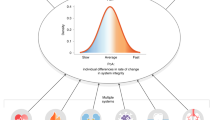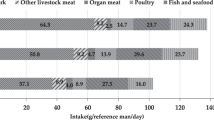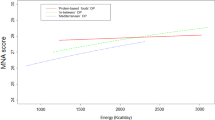Abstract
Aging for an individual and aging for a population are related but not the same. For an individual, aging first involves survival to more advanced years, which will inevitably be accompanied by progressive changes in the structure and function of somatic tissues due to a programmed failure of the organism maximally to invest in their maintenance. For a population, aging means an increase in the median age, a dual function of longer survival of individuals and a decrease in fertility. In the wilds of nature, and for all but the recent decades for the human species, survival beyond the peak reproductive years is rare. The hostility of natural selection has its greatest impact on the young and the old. Only captive fowl and beasts, domesticated animal species and Homo sapiens achieve long survival. For humans, life expectancy from birth and from any age thereafter is increasing; median ages of populations and the percentage of persons over 60 y are rising. The affluent developed countries led the way, but developing countries are closing the gap. As of about 1966, a majority of the world’s elderly live in developing societies. The rarity of growing old left a dearth of knowledge in the domain of gerontological nutrition, both for lack of motivation to learn and lack of individuals and populations to study. The convening of this workshop signifies that the polarity of interest has shifted 180 degrees. Social, economic, physiological and psychological changes with aging and growing older can both be influenced by diet and influence eating patterns and nutritional status. Many assumptions have been made about these changes, but only recently, with concerted metabolic studies of nutrient requirements in healthy elderly and carefully designed multi-center surveys of the health and nutrition of older segments of populations can a true portrait of the issues be delineated.
European Journal of Clinical Nutrition (2000) 54, Suppl 3, S2–S14
This is a preview of subscription content, access via your institution
Access options
Subscribe to this journal
Receive 12 print issues and online access
$259.00 per year
only $21.58 per issue
Buy this article
- Purchase on Springer Link
- Instant access to full article PDF
Prices may be subject to local taxes which are calculated during checkout
Similar content being viewed by others
Author information
Authors and Affiliations
Corresponding author
Rights and permissions
About this article
Cite this article
Solomons, N. Demographic and nutritional trends among the elderly in developed and developing regions. Eur J Clin Nutr 54 (Suppl 3), S2–S14 (2000). https://doi.org/10.1038/sj.ejcn.1601019
Published:
Issue Date:
DOI: https://doi.org/10.1038/sj.ejcn.1601019
Keywords
This article is cited by
-
Gender differences in caregiver attitudes and unmet needs for activities of daily living (ADL) assistance among older adults with disabilities
BMC Geriatrics (2023)
-
The anthropometric status of elderly women in rural Ghana and factors associated with low body mass index
The Journal of nutrition, health and aging (2012)
-
Nutritional determination of the health status in polish elderly people from an urban environment
The Journal of nutrition, health and aging (2010)
-
Socio-demographic, behavioral and functional characteristics of groups of community and institutionalized elderly Quechua Indians of Peru, and their association with nutritional status
Journal of Cross-Cultural Gerontology (2005)



